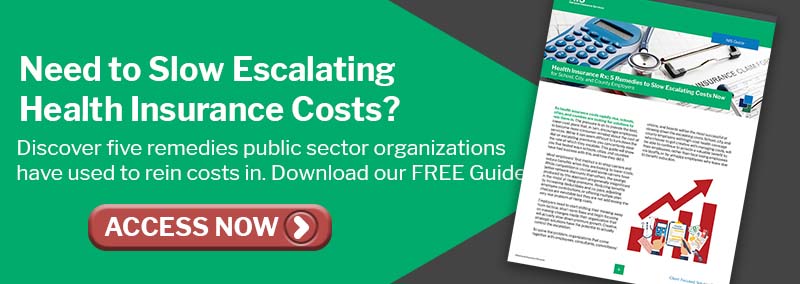2.5 minute read
Health benefit costs have been trending upward for years, over 50% in the last decade, according to the Kaiser Family Foundation. And with the economic uncertainty related to COVID-19, things won’t be slowing down anytime soon.
School, city, and county employers may want to think about reducing their health care benefits costs right now. Establishing a solid plan for 2021 will help better position those who are facing limited budgets. Here are five ways to reduce costs.
1. Investigate Your Health Costs
Where does your health benefits costs money go? What are you spending it all on?
Employers or their agents may want to look into every health care figure they can, from overall premium cost to individual employee expenditures. Understanding where the money goes can help you focus on cost-saving efforts. If prescriptions costs are high, do your employees know about mail order or generic drugs? Does more employee communication need to be established to conquer a high usage of emergency room visits?
2. Technology
Health care visits have evolved beyond visiting in-person. Virtual health care visits called telemedicine have been very popular during the pandemic. Other employers may make wellness apps available to help their employees make better health choices.
3. Alternative Plan Options
Each organization and their health benefits plans needs are unique and there’s no one cookie cutter plan to satisfy their needs. Many employers have ditched the once popular PPO plan and moved to a high deductible health plan (HDHP) with a savings option. An HDHP gives employees more decision-making power and promotes consumerism.
With HDHPs, many employers are offering cost-saving vehicles such as HRAs (Health Reimbursement Arrangements), HSAs (Health Savings Accounts), and FSAs (Flexible Spending Accounts) as a way to help shift costs.
4. Active Enrollment
The active enrollment approach to enrolling benefits, forces an employee to review all their benefit options each year before electing coverage. Employees are able to consider important life events and can reevaluate their benefits they are paying for and potentially not using. This approach can make employees better consumers, improve proactive health care, and lower overall medical expenditures.
5. Funding Structure
Some employers may make a more drastic decision and change how their health plan is funded. Plans can be moved to a self-funding, level-funding, or reference-based pricing model.
Download the bulletin for more details.
This blog is intended to be a compilation of information and resources pulled from federal, state, and local agencies. This is not intended to be legal advice. For up to the minute information and guidance on COVID-19, please follow the guidelines of the Centers for Disease Control and Prevention (CDC) and your local health organizations.

